Nokia 2012 Annual Report Download - page 217
Download and view the complete annual report
Please find page 217 of the 2012 Nokia annual report below. You can navigate through the pages in the report by either clicking on the pages listed below, or by using the keyword search tool below to find specific information within the annual report.-
 1
1 -
 2
2 -
 3
3 -
 4
4 -
 5
5 -
 6
6 -
 7
7 -
 8
8 -
 9
9 -
 10
10 -
 11
11 -
 12
12 -
 13
13 -
 14
14 -
 15
15 -
 16
16 -
 17
17 -
 18
18 -
 19
19 -
 20
20 -
 21
21 -
 22
22 -
 23
23 -
 24
24 -
 25
25 -
 26
26 -
 27
27 -
 28
28 -
 29
29 -
 30
30 -
 31
31 -
 32
32 -
 33
33 -
 34
34 -
 35
35 -
 36
36 -
 37
37 -
 38
38 -
 39
39 -
 40
40 -
 41
41 -
 42
42 -
 43
43 -
 44
44 -
 45
45 -
 46
46 -
 47
47 -
 48
48 -
 49
49 -
 50
50 -
 51
51 -
 52
52 -
 53
53 -
 54
54 -
 55
55 -
 56
56 -
 57
57 -
 58
58 -
 59
59 -
 60
60 -
 61
61 -
 62
62 -
 63
63 -
 64
64 -
 65
65 -
 66
66 -
 67
67 -
 68
68 -
 69
69 -
 70
70 -
 71
71 -
 72
72 -
 73
73 -
 74
74 -
 75
75 -
 76
76 -
 77
77 -
 78
78 -
 79
79 -
 80
80 -
 81
81 -
 82
82 -
 83
83 -
 84
84 -
 85
85 -
 86
86 -
 87
87 -
 88
88 -
 89
89 -
 90
90 -
 91
91 -
 92
92 -
 93
93 -
 94
94 -
 95
95 -
 96
96 -
 97
97 -
 98
98 -
 99
99 -
 100
100 -
 101
101 -
 102
102 -
 103
103 -
 104
104 -
 105
105 -
 106
106 -
 107
107 -
 108
108 -
 109
109 -
 110
110 -
 111
111 -
 112
112 -
 113
113 -
 114
114 -
 115
115 -
 116
116 -
 117
117 -
 118
118 -
 119
119 -
 120
120 -
 121
121 -
 122
122 -
 123
123 -
 124
124 -
 125
125 -
 126
126 -
 127
127 -
 128
128 -
 129
129 -
 130
130 -
 131
131 -
 132
132 -
 133
133 -
 134
134 -
 135
135 -
 136
136 -
 137
137 -
 138
138 -
 139
139 -
 140
140 -
 141
141 -
 142
142 -
 143
143 -
 144
144 -
 145
145 -
 146
146 -
 147
147 -
 148
148 -
 149
149 -
 150
150 -
 151
151 -
 152
152 -
 153
153 -
 154
154 -
 155
155 -
 156
156 -
 157
157 -
 158
158 -
 159
159 -
 160
160 -
 161
161 -
 162
162 -
 163
163 -
 164
164 -
 165
165 -
 166
166 -
 167
167 -
 168
168 -
 169
169 -
 170
170 -
 171
171 -
 172
172 -
 173
173 -
 174
174 -
 175
175 -
 176
176 -
 177
177 -
 178
178 -
 179
179 -
 180
180 -
 181
181 -
 182
182 -
 183
183 -
 184
184 -
 185
185 -
 186
186 -
 187
187 -
 188
188 -
 189
189 -
 190
190 -
 191
191 -
 192
192 -
 193
193 -
 194
194 -
 195
195 -
 196
196 -
 197
197 -
 198
198 -
 199
199 -
 200
200 -
 201
201 -
 202
202 -
 203
203 -
 204
204 -
 205
205 -
 206
206 -
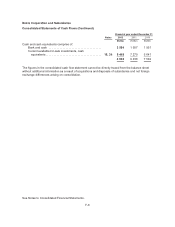 207
207 -
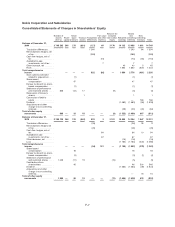 208
208 -
 209
209 -
 210
210 -
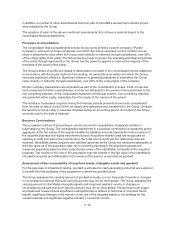 211
211 -
 212
212 -
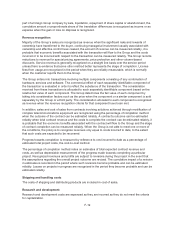 213
213 -
 214
214 -
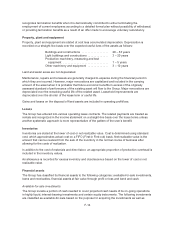 215
215 -
 216
216 -
 217
217 -
 218
218 -
 219
219 -
 220
220 -
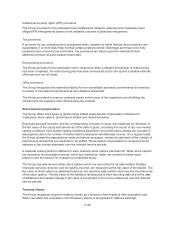 221
221 -
 222
222 -
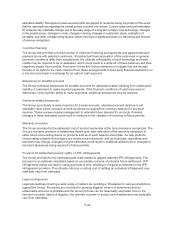 223
223 -
 224
224 -
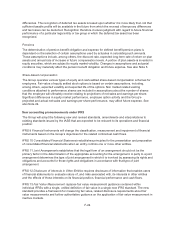 225
225 -
 226
226 -
 227
227 -
 228
228 -
 229
229 -
 230
230 -
 231
231 -
 232
232 -
 233
233 -
 234
234 -
 235
235 -
 236
236 -
 237
237 -
 238
238 -
 239
239 -
 240
240 -
 241
241 -
 242
242 -
 243
243 -
 244
244 -
 245
245 -
 246
246 -
 247
247 -
 248
248 -
 249
249 -
 250
250 -
 251
251 -
 252
252 -
 253
253 -
 254
254 -
 255
255 -
 256
256 -
 257
257 -
 258
258 -
 259
259 -
 260
260 -
 261
261 -
 262
262 -
 263
263 -
 264
264 -
 265
265 -
 266
266 -
 267
267 -
 268
268 -
 269
269 -
 270
270 -
 271
271 -
 272
272 -
 273
273 -
 274
274 -
 275
275 -
 276
276 -
 277
277 -
 278
278 -
 279
279 -
 280
280 -
 281
281 -
 282
282 -
 283
283 -
 284
284
 |
 |
These investments are initially recognized and subsequently remeasured at fair value. Fair value
adjustments and realized gains and losses are recognized in profit and loss.
Loans receivable
Loans receivable include loans to customers and suppliers. Loans receivable are initially measured at fair
value and subsequently at amortized cost less impairment using the effective interest method. Loans are
subject to regular and thorough review as to their collectability and available collateral. In the event that a
loan is deemed not fully recoverable, a provision is made to reflect the shortfall between the carrying
amount and the present value of the expected cash flows. Loan interest is recognized in interest income.
The long-term portion of loans receivable is included on the statement of financial position under long-
term loans receivable and the current portion under current portion of long-term loans receivable.
Bank and cash
Bank and cash consist of cash at bank and in hand.
Accounts receivable
Accounts receivable are carried at the original amount due from customers, which is considered to be
fair value, less allowances for doubtful accounts. Allowance for doubtful accounts is based on a
monthly review of all outstanding amounts where significant doubt about collectability exists. Monthly
review includes an analysis of historical bad debt, customer concentrations, customer creditworthiness,
current economic trends and changes in our customer payment terms. Allowance for doubtful accounts
is included in profit and loss within other operating expenses.
Financial liabilities
Compound financial instruments
Compound financial instruments have both a financial liability and an equity component from the
issuers’ perspective. The components are defined based on the terms of the financial instrument and
presented and measured separately according to their substance. At initial recognition of a compound
financial instrument, the financial liability component is recognized at fair value and residual amount is
allocated to the equity component. This allocation is not revised subsequently. The Group has issued a
convertible bond, which is a compound financial instrument, and its financial liability component is
accounted for as a loan payable.
Loans payable
Loans payable are recognized initially at fair value, net of transaction costs incurred. In subsequent
periods loans payable are measured at amortized cost using the effective interest method. Transaction
costs and loan interest are recognized in interest expenses over the life of the instrument. The long-
term portion of loans payable is included on the statement of financial position under long-term
interest-bearing liabilities and the current portion under current portion of long-term loans.
Accounts payable
Accounts payable are carried at the original invoiced amount, which is considered to be fair value due
to the short-term nature of the Group’s accounts payable.
Derivative financial instruments
All derivatives are initially recognized at fair value on the date a derivative contract is entered into and are
subsequently remeasured at their fair value. The method of recognizing the resulting gain or loss varies
according to whether the derivatives are designated under and qualify for hedge accounting or not.
F-16
